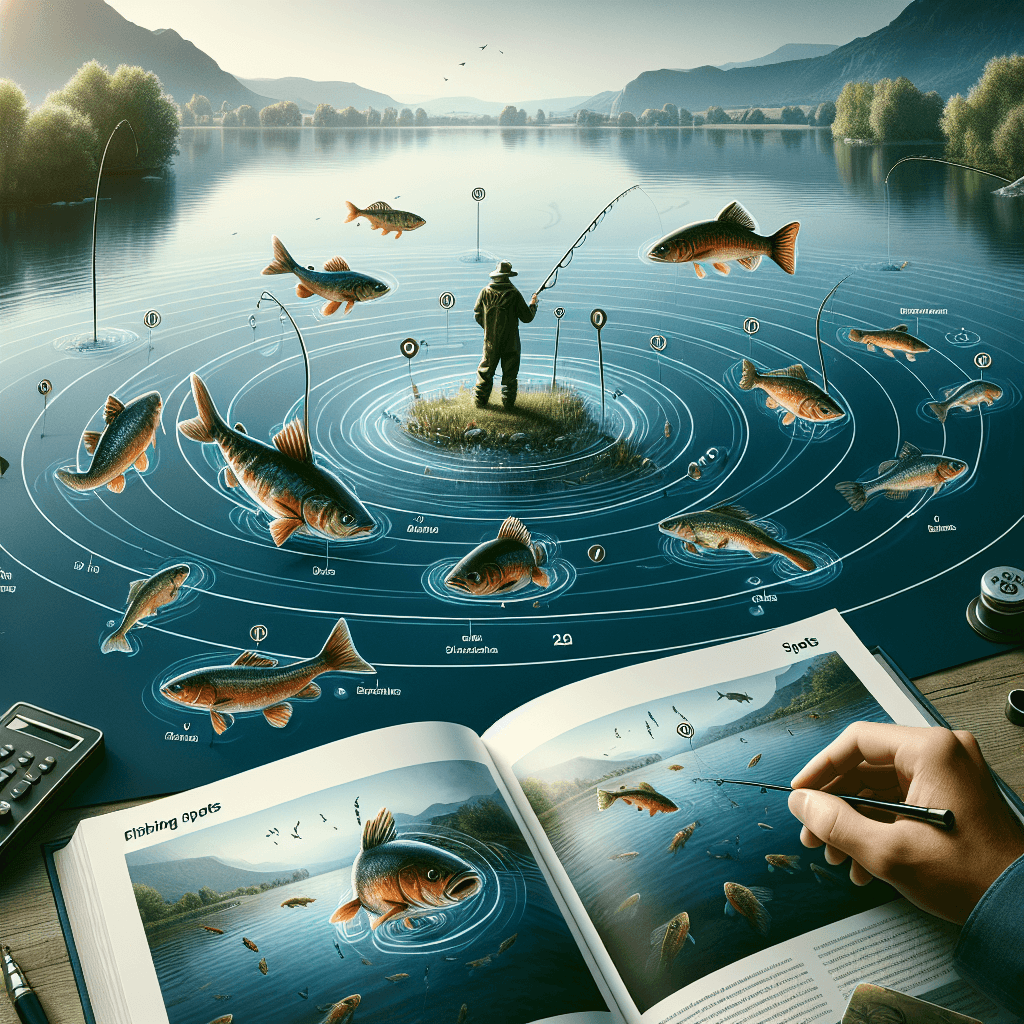The Best Fishing Spots
Are you an avid angler looking to discover the ultimate fishing spots in lakes or rivers? If so, you’re in luck! This article explores various strategies and techniques to help you identify the best fishing spots. Whether you’re a seasoned fisherman or a beginner, these tips will assist you in finding those hotspots that are brimming with fish and ensuring a successful day on the water. So, grab your fishing gear and get ready to reel in the big catches!
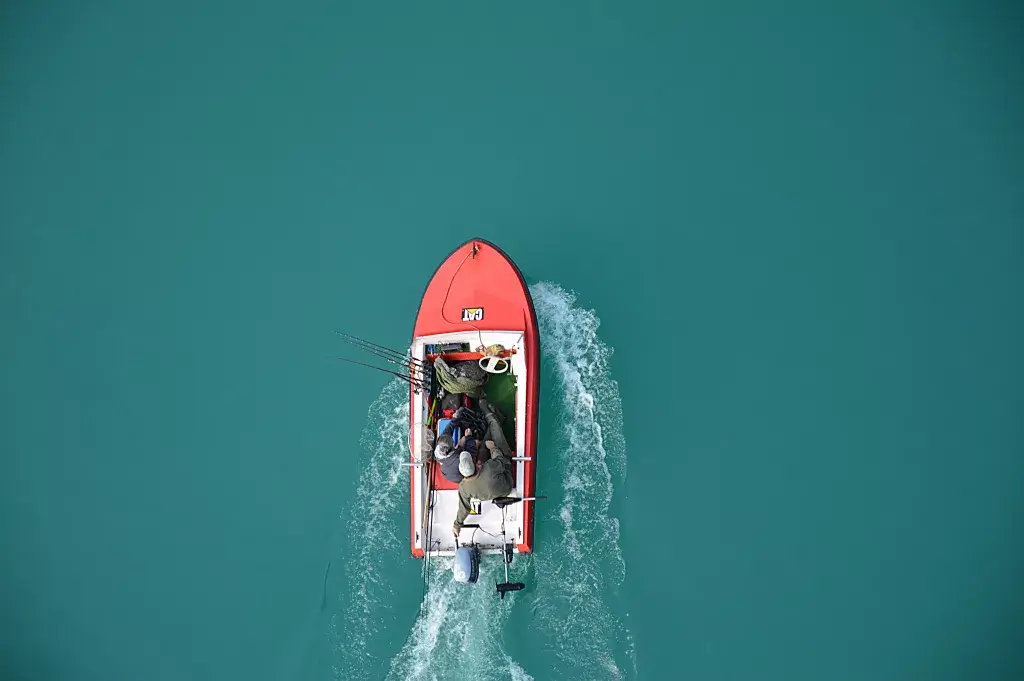
Understanding the Factors
Depth
One of the key factors to consider when identifying the best fishing spots is the depth of the water. Different fish species tend to inhabit different depths, so understanding the depth of the lake or river can give you valuable insights into where to cast your line. Use a depth finder or a fish finder to measure the depth of the water in various areas. This will help you locate drop-offs, underwater structures, and other features that attract fish.
Temperature
Temperature plays a crucial role in the behavior and movement of fish. Different species have different temperature preferences, so understanding the water temperature can help you determine where the fish might be congregating. Use a thermometer designed for fishing to measure the water temperature at various depths. This information will guide you to the areas where the fish are most likely to be active.
Cover
Fish often seek shelter and cover to protect themselves from predators. Areas with rocks, fallen trees, submerged vegetation, or other types of cover can be hotspots for fishing. These areas provide hiding places for fish and attract smaller creatures, which in turn attract larger predatory fish. Look for areas with visible cover and cast your lines around these spots to increase your chances of success.
Currents
Understanding the currents in a lake or river is essential for identifying fishing spots. Fish use currents to their advantage, as they can help them find food and cover. Look for areas where the water flows differently, such as eddies, bends, or confluences. These changes in current can create ideal fishing locations, as fish tend to gather there. By observing the movement and speed of the water, you can pinpoint areas where fish are likely to congregate.
Structure
The underwater structure of a lake or river, such as rocks, drop-offs, ledges, and submerged logs, is a significant factor in determining where fish are most likely to be found. Studying underwater topographic maps or using a fish finder can help you identify these structures. Fish often use these structures as feeding and hiding places, making them ideal fishing spots. By targeting these areas, you increase your chances of hooking a prize catch.
Using Technology
Fish Finders
Fish finders are valuable tools that utilize sonar technology to detect and display underwater objects, including fish. These devices provide real-time information about water depth, structure, and the presence of fish. By using a fish finder, you can quickly identify potential fishing hotspots without the need for trial and error. Invest in a quality fish finder and learn how to interpret its readings to maximize your chances of success.
Sonar
Sonar technology is commonly used in fish finders to detect underwater objects. It works by emitting sound waves that bounce off objects and return as echoes. By analyzing these echoes, anglers can determine the depth and structure of the water, as well as locate schools of fish. Understanding how sonar works and how to interpret the readings it provides will greatly enhance your ability to identify the best fishing spots.
GPS
Global Positioning System (GPS) devices are invaluable tools for anglers seeking to navigate and mark fishing spots accurately. With a GPS device, you can easily mark your favorite fishing locations and return to them with ease. Additionally, GPS units often integrate with fish finders, allowing you to combine the advantages of both technologies. This combination enables you to mark productive spots and find new ones more effectively.
Topographic Maps
Topographic maps provide detailed information about the contours and features of the land and water. They can help you identify potential fishing spots by highlighting underwater structures, depths, and other important details. These maps typically depict contour lines that show changes in water depth and help you determine the best locations to fish. Topographic maps are available both in traditional paper format and digital versions, making them accessible to anglers of all levels of experience.
Observing Nature
Bird Activity
Birds are excellent indicators of fish activity. They often gather near areas with plentiful food sources, such as schools of fish. Keep an eye out for diving birds or birds circling above a specific area, as they could be signaling the presence of baitfish being chased by larger predators. By observing bird activity, you can narrow down your search to productive fishing spots.
Insect Activity
Insects are an essential part of the aquatic food chain and serve as a food source for many fish species. Pay attention to the insect activity on the water’s surface, as it can give you clues about the presence of fish below. If you notice a hatch or swarms of insects, there is a good chance that fish are feeding on them. Target those areas with your bait or lures to increase your chances of success.
Fish Activity
Observing the behavior of fish is one of the most direct ways to determine where they are located. Look for signs of fish activity such as jumping, splashing, or swirls on the water’s surface. These actions often indicate feeding or schooling behavior, suggesting that fish are present in that area. By paying attention to fish activity, you can adjust your fishing technique and target the spots where the fish are actively feeding.
Presence of Vegetation
Vegetation can play a crucial role in attracting fish by providing cover and serving as a food source. Look for areas with submerged or emergent vegetation, such as water lilies, weed beds, or submerged grass. These areas usually harbor insects, small fish, and other organisms that attract larger predatory fish. Casting your line near vegetation can significantly increase your chances of catching fish.
Researching Local Knowledge
Local Fishermen
Local fishermen are an invaluable source of knowledge when it comes to identifying the best fishing spots. Strike up conversations with experienced anglers in the area and ask for their advice and recommendations. They can provide insights into specific locations, techniques, and bait choices that work well in the area. Local fishermen often have a deep understanding of the water and fish behavior, making their input highly valuable.
Fishing Reports
Fishing reports, whether from local organizations, fishing publications, or online sources, can provide valuable information about recent fishing activity in the area. These reports often include details about species caught, techniques used, and specific locations. By consulting fishing reports, you can gain insights into current fishing conditions and trends, helping you make informed decisions about where to fish.
Online Forums
Online fishing forums and communities are a treasure trove of information for anglers. Participate in these forums and ask questions about the best fishing spots in the area you plan to fish. Engaging with fellow anglers allows you to tap into a collective knowledge base and get firsthand accounts and recommendations. Additionally, these forums often feature discussions on various fishing topics, gear recommendations, and fishing techniques that can further enhance your fishing experience.
Local Guides
Hiring a local fishing guide can be an excellent investment, especially if you are unfamiliar with the area. Local guides have an intimate knowledge of the water, its fish species, and productive fishing spots. They can teach you specific techniques, provide equipment, and offer valuable insights into the local fishing scene. Whether it’s a guided fishing trip or a brief consultation, a local guide can significantly increase your chances of success.
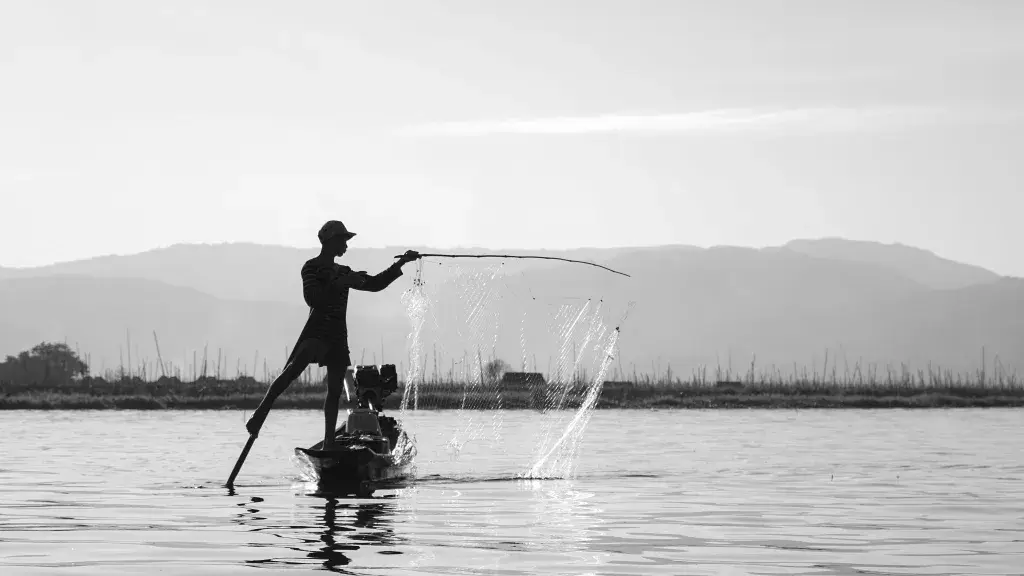
Testing Different Locations
Casting and Reeling
One effective way to identify the best fishing spots is through trial and error. Cast your line to different areas, varying your distance and direction. By experimenting with your casts and reeling in the line, you can cover a larger area and gauge the fish’s response. If you are not getting any bites or action in a particular spot, move on to another location and repeat the process until you find fish that are biting.
Using Different Baits
Fish have different feeding preferences, so trying out a variety of baits can help you determine which ones are most effective in a given location. Use live bait, artificial lures, or even flies to see what entices the fish to strike. Vary your bait choices depending on the species you are targeting and the prevailing fishing conditions. Testing different baits and observing the fish’s response will help you identify the most productive options.
Varying Techniques
Fish can exhibit varying feeding behaviors depending on the time of year, weather conditions, and water characteristics. Use a range of fishing techniques, such as trolling, jigging, or bottom fishing, to see which one yields the best results. Experiment with different retrieval speeds, presentations, and depths to find the technique that attracts the most fish. Adapting your fishing techniques to the prevailing conditions will increase your chances of success.
Moving Around
Don’t get stuck in one spot for too long. If you’re not having any luck in a particular area, it’s crucial to keep moving and exploring new locations. Remember that fish are constantly on the move, so what was unproductive one day may be teeming with fish the next. Be open to trying new spots and always be prepared to adjust your fishing strategy accordingly. By staying mobile and covering more water, you increase your chances of finding the best fishing spots.
Understanding the Seasonal Patterns
Spring Fishing
Spring is a time of rebirth and increased activity in the aquatic ecosystem. As the water starts to warm up, fish become more active and move into shallower areas to feed and spawn. Look for areas with warmer water, such as sunny shorelines or near inlets, where fish are likely to congregate. During this time, bass, trout, and panfish species are particularly active and can be caught using a variety of techniques.
Summer Fishing
Summertime means warm water temperatures and a wide range of fishing opportunities. Many fish species move deeper, seeking cooler water and more abundant food sources. Focus on areas with underwater structures and deeper drop-offs. Additionally, early mornings and evenings are often productive times, as fish are more active during these cooler periods. Target species like walleye, catfish, and bass, adapting your techniques to the specific behavior of each species.
Fall Fishing
Fall is a time of transition, as fish prepare for winter and feeding intensifies. As the water cools down, fish become more active and begin migrating to shallower areas. Look for areas with fallen leaves, submerged vegetation, or rocky shorelines, as they can hold large numbers of fish. During this time, salmon, trout, and northern pike are popular targets for anglers. Experiment with different presentations and focus on areas of increased fish activity.
Winter Fishing
Winter fishing presents unique challenges but can also yield rewarding experiences. As the water temperature drops, fish become sluggish and seek areas with more stable conditions. Look for deep pools, slow-moving currents, or areas with thermal discharges, as they tend to hold more active fish. Ice fishing is a popular winter activity, providing access to otherwise inaccessible areas. Target species like perch, crappie, and trout, using small jigs or live bait presented at the correct depth.
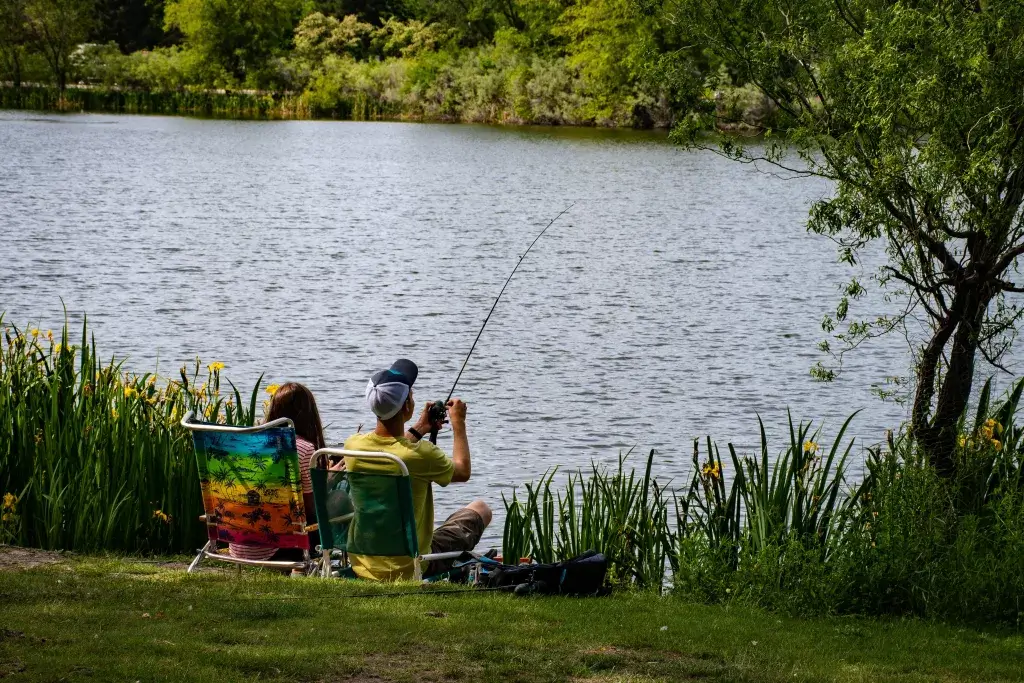
Considering Time of Day
Early Morning
The early morning hours can be ideal for fishing, as fish tend to be more active during this time. Avoid the rush of midday and head out to the water at daybreak. This is when fish are often feeding and more likely to take your bait or lure. Focus on areas near shorelines or structures, as fish may be moving from deeper water to shallower areas to feed. Adjust your fishing techniques and bait choices depending on the species you are targeting.
Midday
Midday fishing can be challenging due to the increased activity, warm water temperatures, and intense sunlight. During this time, fish often seek deeper, cooler waters and become less active. However, certain species, such as catfish and bass, can still be caught using specific techniques like bottom fishing or targeting shaded areas. Consider focusing on areas with cover, such as vegetation or submerged structures, to increase your chances of success.
Evening
As the sun starts to set, fish become more active again, making the evening hours prime fishing time. Take advantage of this period when fish begin to feed in preparation for the night. Target areas near shallow structures or drop-offs, as fish move back to the shallows to forage. Adjust your techniques and bait choices depending on the species you are targeting. Fishing during the evening can offer a peaceful and rewarding experience.
Night Fishing
Night fishing can be a thrilling and unique experience, offering a different set of opportunities and challenges. Many fish species, such as catfish and walleye, are more active during the night. Use specialized tackle, such as glow-in-the-dark lures or bait, to attract fish in low-light conditions. Focus on areas with gentle currents or structures, as fish tend to congregate in these areas to feed. Always prioritize safety during nighttime fishing and ensure you have proper lighting and equipment.
Taking Weather Conditions into Account
Temperature
Water temperature plays a significant role in fish activity. Fish are cold-blooded creatures, so their metabolism and feeding patterns are influenced by the water temperature. As a general rule, fish are more active in warmer water, while colder temperatures can slow down their metabolism. Monitor the water temperature and adjust your fishing techniques and bait choices accordingly. Be aware that fish may be more sluggish during extreme cold or hot temperatures.
Wind
Wind can have a profound impact on fishing conditions. A light breeze can create ripples on the water’s surface, which can enhance fishing by stirring up food sources and making fish less cautious. However, strong winds can make fishing challenging, as they create rougher water and make it harder to control your boat or cast accurately. On windy days, consider focusing on areas with natural windbreaks, such as coves or shorelines sheltered from the wind.
Cloud Cover
Cloud cover affects the amount of light reaching the water’s surface and can influence fish behavior. Bright, sunny days can make fish more cautious and seek cover, while overcast days can make them more active and willing to feed. Pay attention to the cloud cover and adjust your techniques accordingly. On sunny days, focus on areas with shade or structures where fish might be seeking refuge. On cloudy days, try covering more water and varying your presentations to entice bites.
Barometric Pressure
Barometric pressure, also known as atmospheric pressure, can impact fish behavior. Rapidly changing or unstable pressure can make fish less active and more difficult to catch. Conversely, stable or falling pressure can trigger feeding activity. Keep track of the barometric pressure before and during your fishing trip to better understand fish behavior. By aligning your fishing trips with stable or falling pressure, you increase your chances of finding active and feeding fish.
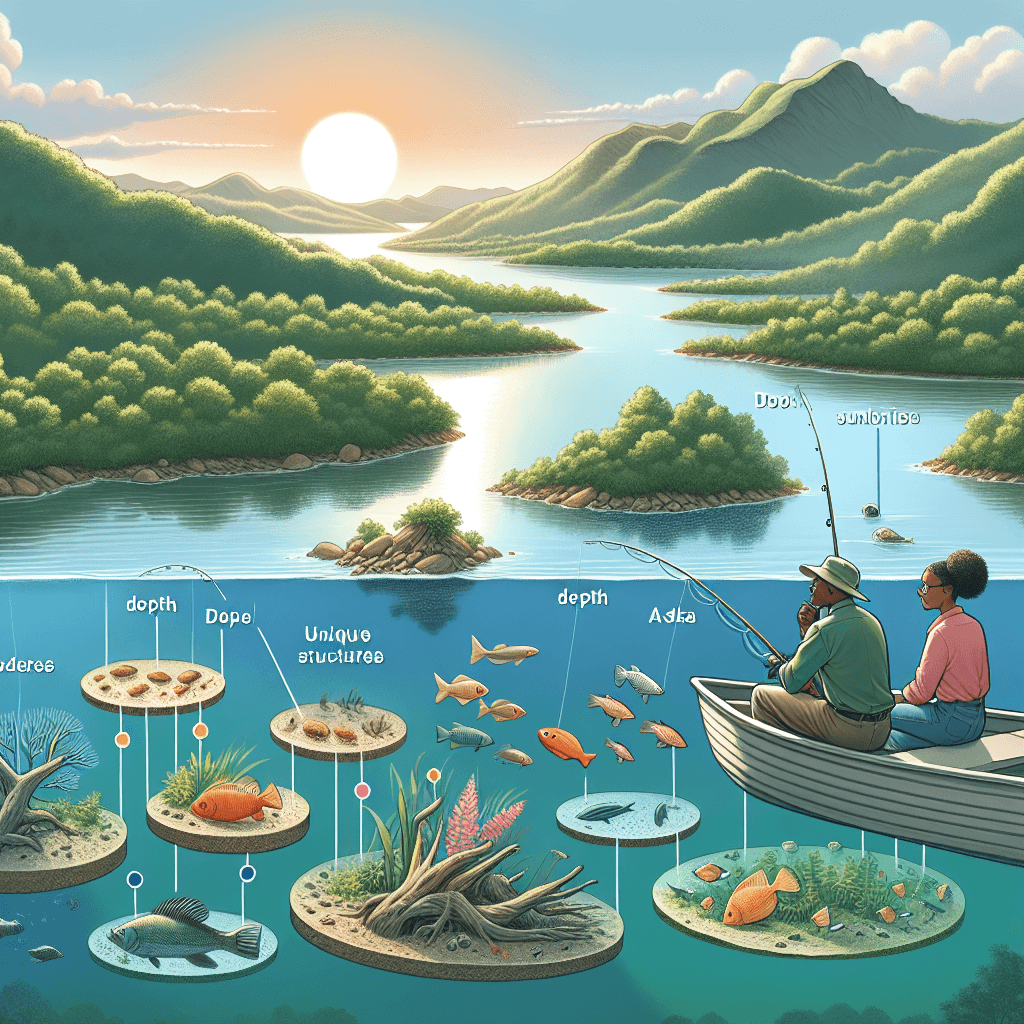
Fishing Regulations and License
Check Local Regulations
Before embarking on your fishing adventure, it is essential to familiarize yourself with the local fishing regulations. Each region has specific rules regarding fishing seasons, catch limits, and permitted fishing methods. Ensure you have the necessary permits and adhere to the regulations to protect fish populations and maintain the health of the ecosystem. Respect the local rules and fisheries management efforts to ensure a sustainable fishing experience for future generations.
Obtain Fishing License
In most jurisdictions, anglers are required to obtain a valid fishing license before casting their lines. Fishing licenses contribute to conservation efforts, habitat preservation, and the maintenance of recreational fishing opportunities. Check with your local fishing department or wildlife agency to find out the specific requirements and fees associated with obtaining a fishing license. By obtaining the appropriate license, you can legally enjoy the fishing experience and support conservation initiatives.
Making Use of Local Bait and Tackle Shops
Seek Expert Advice
Local bait and tackle shops are often run by experienced anglers who know the area’s fishing conditions intimately. Visit these shops and strike up conversations with the staff to get the latest information on fishing hotspots, current conditions, and successful techniques. They can provide valuable insights into local fish preferences, bait recommendations, and equipment choices. Building a relationship with these experts can lead to fruitful fishing experiences and continual learning.
Purchase Quality Baits and Tackle
Bait and tackle shops are an excellent source for quality fishing gear that is specific to the local fishery. They offer a wide range of bait options, including live bait, frozen bait, and artificial lures, suited for the area’s target species. The knowledgeable staff can guide you in selecting the most effective tackle, lines, and hooks for your fishing needs. By investing in quality baits and tackle, you can increase your chances of success and improve your overall fishing experience.
In conclusion, identifying the best fishing spots in a lake or river requires a comprehensive understanding of various factors. By considering the depth, temperature, cover, currents, and structure of the water, you can narrow down your search and target areas where fish are likely to be found. Utilizing technology such as fish finders, sonar, GPS, and topographic maps can provide valuable information and enhance your fishing experience.
Observing natural indicators such as bird activity, insect activity, fish activity, and the presence of vegetation can further guide you to productive fishing spots. Researching local knowledge, including consulting local fishermen, fishing reports, online forums, and hiring guides, can provide invaluable insights into specific locations, techniques, and bait choices.
Testing different locations by casting and reeling, using different baits, varying techniques, and moving around helps you explore a wide range of fishing spots and adapt to changing conditions. Understanding seasonal patterns, considering the time of day, taking weather conditions into account, and adhering to fishing regulations and obtaining licenses are essential aspects of responsible angling.
Lastly, making use of local bait and tackle shops allows you to tap into the expertise of experienced anglers, seek advice, and purchase high-quality gear tailored to the local fishing opportunities. By combining these strategies and continuously learning from your experiences, you can improve your fishing skills and increase your chances of success in finding the best fishing spots in a lake or river.
